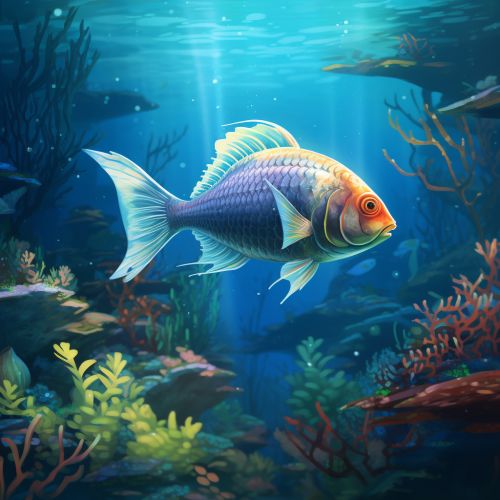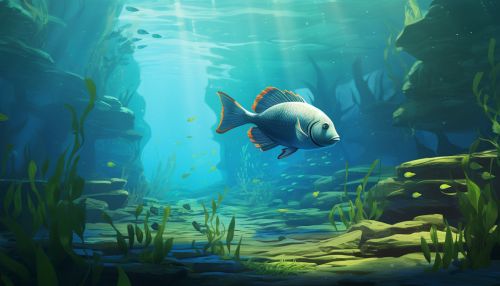Euryhaline
Definition and Overview
A Euryhaline organism is a type of aquatic animal that can adapt to a wide range of salinities. This term is derived from two Greek words: "eurys," meaning broad, and "halinos," meaning of salt. Euryhaline species are found in many types of aquatic environments, including freshwater, brackish water, and saltwater. They are capable of enduring significant changes in salinity, either through physiological adaptations or behavioral changes.


Adaptations
Euryhaline species have developed a variety of physiological and behavioral adaptations that allow them to survive in environments with fluctuating salinity levels. These adaptations include changes in their osmoregulatory processes, cell structure, and metabolic pathways.
Osmoregulation
Osmoregulation is the process by which organisms maintain the balance of water and salts in their bodies. In euryhaline species, this process is highly adaptable, allowing them to adjust to varying salinity levels. For example, when in a high-salinity environment, these organisms can excrete excess salts through specialized cells called chloride cells in their gills. Conversely, in a low-salinity environment, they can absorb salts from the water while excreting excess water.
Cell Structure
The cell structure of euryhaline species also plays a crucial role in their ability to adapt to different salinities. Their cell membranes are highly permeable, allowing for efficient exchange of water and ions. Additionally, they have a high concentration of aquaporins, proteins that facilitate water transport across cell membranes.
Metabolic Adaptations
Euryhaline species also exhibit metabolic adaptations that enable them to survive in varying salinities. For instance, they can adjust their metabolic rate to conserve energy in high-salinity environments, where the energy cost of osmoregulation is high. They also have a high capacity for anaerobic metabolism, which allows them to survive in low-oxygen conditions often associated with high salinity.
Examples of Euryhaline Species
There are many examples of euryhaline species across various taxonomic groups, including fish, crustaceans, and mollusks.
Fish
Many species of fish are euryhaline, including the Atlantic salmon, striped bass, and mummichog. These species can migrate between freshwater and saltwater environments, undergoing physiological changes to adapt to the different salinities.
Crustaceans
Several species of crustaceans are also euryhaline. For example, the blue crab can tolerate a wide range of salinities, from freshwater to the high salinity of the open ocean.
Mollusks
Some mollusks, such as the eastern oyster, are also euryhaline. These organisms can tolerate salinities ranging from nearly freshwater to highly saline conditions.
Implications for Ecosystems and Biodiversity
Euryhaline species play a crucial role in maintaining biodiversity in aquatic ecosystems. Their ability to adapt to varying salinities allows them to inhabit diverse environments, from freshwater rivers and lakes to brackish estuaries and saltwater oceans. This adaptability contributes to the overall resilience of these ecosystems, as euryhaline species can survive and thrive under changing environmental conditions.
